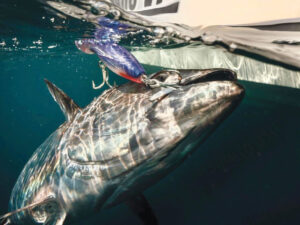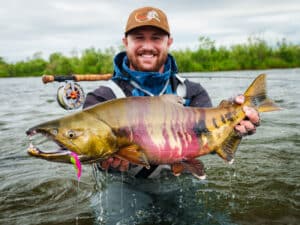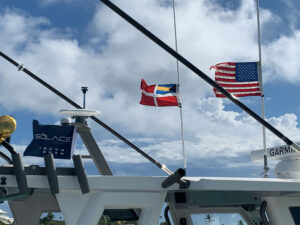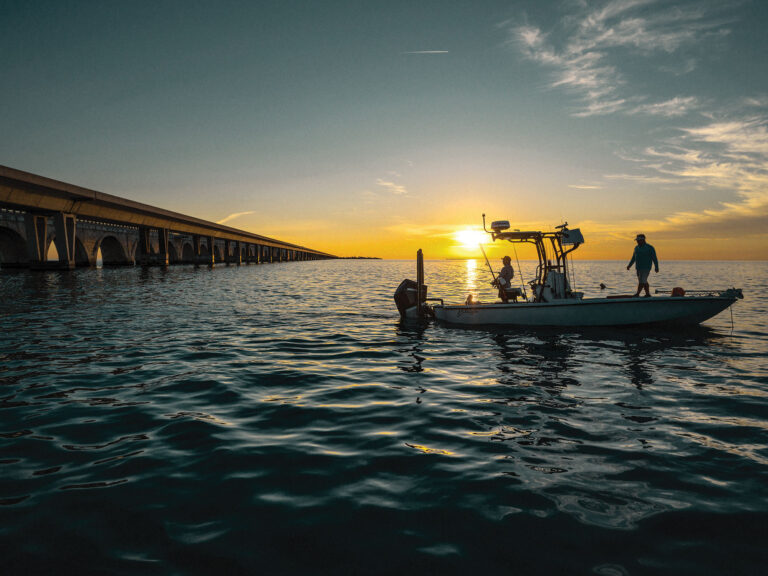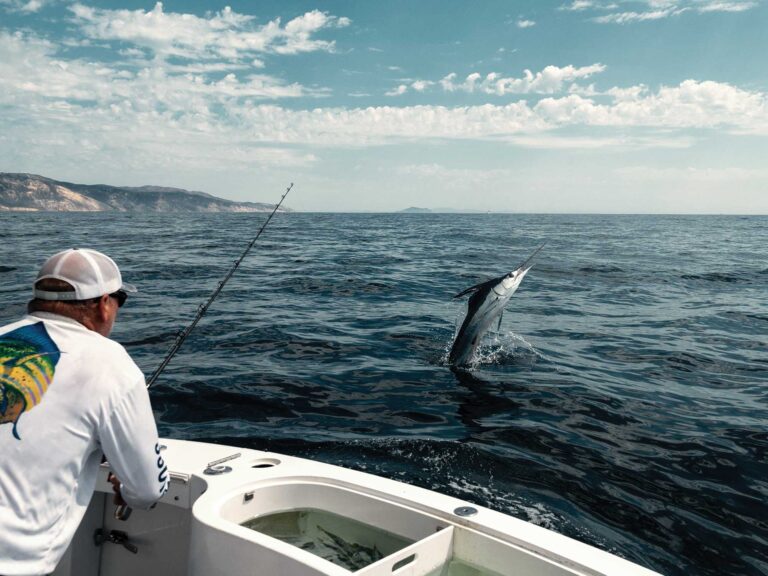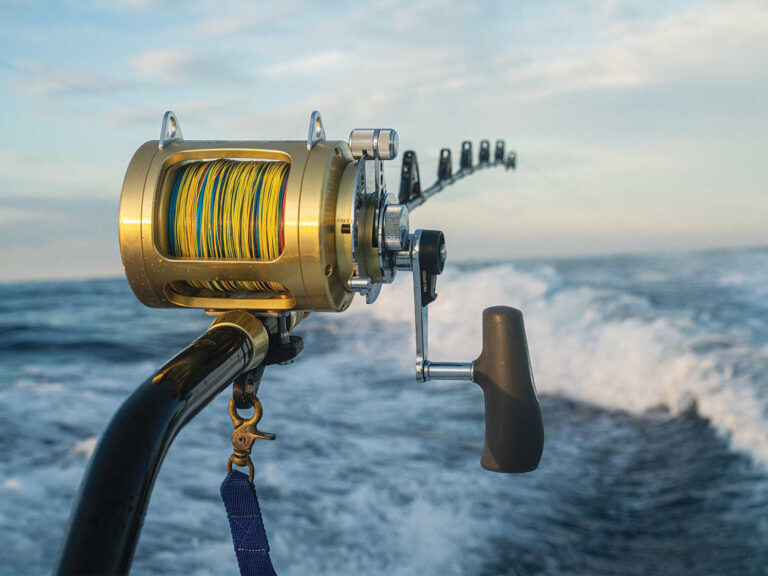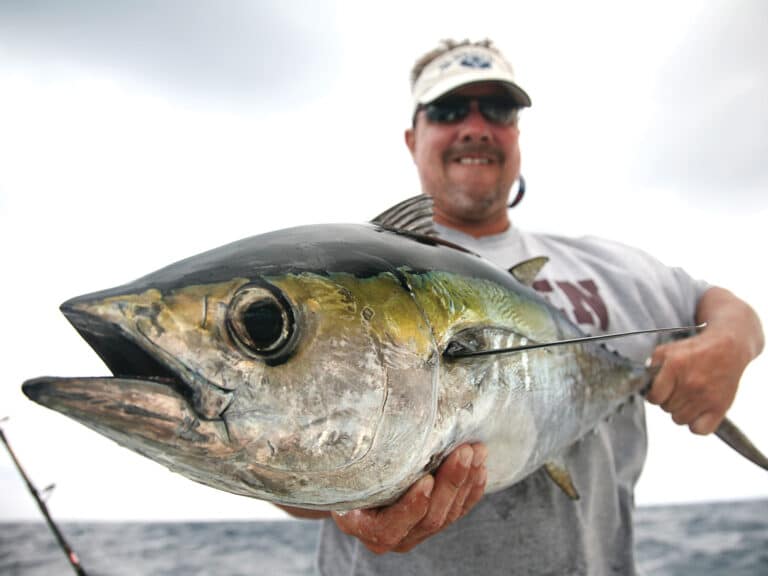
Surf Fishing Technique main
Many saltwater fly-anglers began their fly-fishing journey in fresh water. For most, that meant fishing in a pair of waders or simply walking a shoreline trying to feed a fish their fly. While many of the lessons learned while freshwater fishing can be applied to saltwater fishing, it is not always the case. Saltwater fly-fishing brings with it a new set of circumstances not always seen when in fresh water, especially in shore-break conditions. Let’s look at the basics of what the beginner saltwater fly-angler needs to know in order to be successful in the surf.
Equipment Choice
Having the ability to make longer casts is essential when pursuing fish in salt water. While 20- to 30-foot casts could get you a bite or two in a trout stream, they’re simply not efficient in the ocean. Forty- to 50-foot-long casts are certainly the minimum, and truth be told, the goal is to eventually reach the 70-plus-foot mark. While longer rods can help anglers achieve those distances, nothing will have more of an impact on cast than perfecting the double-haul technique.
The size and weight of your rod will vary depending on the size of the fish you are targeting and the conditions you will be fishing. For anglers targeting redfish in the backcountry, a 9-foot-long 7- or 8-weight rod would be the norm. However, if your fishing were taking place on an open beach where wind conditions could play havoc with your casting, a 9-weight rod might be a better choice. The same holds true for Northeastern striped-bass anglers. An 8- or 9-weight rod will work just fine in most estuaries, but if your fishing takes place on a jetty with lots of rocks and wave conditions to contend with, a 10-weight rod might be a better choice. For the open-ocean beach angler, a 12- to 13-foot-long two-handed rod might be an even better choice. These rods allow anglers to shoot their lines over and past the breaking waves with minimal effort.
The type of water you plan on fishing will help determine many of your equipment needs. This is especially true when selecting fly lines. For you Northeast anglers fishing stripers, an intermediate line is probably your best choice. An intermediate line has slow sinking properties that allow your fly to cut through breaking waves and currents during the retrieve. When fishing an intermediate line in calm conditions, you can be assured that your fly is traveling through the fishes’ feeding zone just under the surface. Many anglers in the Southeast will use a floating line as they ply very shallow water in search of redfish or speckled trout. If you’re fishing off of a jetty or some other rocky type structure, you can employ an intermediate line; however, many anglers prefer a quicker sinking line (like an integrated shooting head). These lines can get your fly under the surface more quickly and will work well in fast-moving water where getting your fly down to fewer than 20 feet is called for.
Fly Selection
Having an assortment of flies that will allow you to fish all levels of the water column is going to be your best bet. You always want to have flies with you that fish on the surface, slightly under the surface and near the bottom. Differentiate the sizes of your flies so you can match the size of the bait that is present. Also, it is recommended that you bring along a variety of colors. Olive, gray and white-and-chartreuse are probably going to be the most popular color choices. Carrying a few Clousers, crab patterns, Deceivers, gurglers and surf candies will get you started in the right direction for most every fish that swims in the ocean. Planning ahead and doing some homework can help make fly selection a little easier.
Odds and Ends
Polarized glasses will help you see through the water more easily and will also protect an errant fly from hitting you in your peepers and causing real problems.
When wade-fishing in any environment, it is always a good idea to carry a knife in a sheath on your wader belt. Should you ever find yourself underwater, it allows you the chance to cut yourself out of your waders quickly before they begin to fill up and turn an uncomfortable situation into a dangerous one. Before getting outfitted for the salt, it is always best to talk with a friend in the know or to search any number of fishing forums available on the Web (FFSW forum has one) and ask other anglers what is needed for the waters you will be fishing.
Probably the single most important piece of equipment a saltwater fly-angler will need is a stripping basket. A multitude of things can happen when fishing for bigger and faster-moving fish. A stripping basket allows you to know where your line is at all times. There are a number of ready-made baskets that anglers can choose from. A stripping basket is the American Express card to saltwater fly-fishing. Do not leave home without it!
Catching Fish
Before tackling a fishing spot on foot, I recommend that you drive to the area you will be fishing before you actually fish it. Go to your spot around low tide and on either the full or new moon. This allows you to see the contour of the water you will be fishing before the tide comes up. Fish and the baitfish they feed on travel similarly to the way we do in our cars. Fish use channels, cuts, sandbars and troughs as highways to come into shallow water to feed and then make their way back into the safety of deeper water. It is important for you to find these highways, because they will be their paths in as well as their paths out. Once the water comes up you will already have an idea of where the fish will be. This holds true whether fishing a beach, a jetty or an estuary. Many anglers already know that some of our favorite game fish are nocturnal and feed best at night. Having scouted out an area at low water during the daytime can allow you to reap the rewards when coming back to fish at night. Fish tend to feed shallowest during low light periods.
One last piece of advice for the new saltwater angler: Keep a diary. Put down information like where you fished, which flies worked, what bait you saw in the water, water temperature (if possible), wind conditions, sunny vs. cloudy, water clarity and what stage of the tide you fished. This information will become invaluable to you and fellow anglers you wish to share information with. Fish are generally creatures of habit and will show up year after year at the same places (providing the food is there). A diary will become your biggest aid to angling success.
Recommended Equipment
•Waders
•Wading belt
•Foul-weather top
•Chest pack, fanny pack or backpack (to hold fly boxes, leaders, tippets, snips, etc.)
•Polarized glasses
•Lens cleaner or wipe
•Stripping basket
•Sun block
•Insect repellent
Optional Equipment
•Foul-weather bottoms (jetty fishing)
•Boots (jetty fishing)
•Cleated shoes (jetty fishing)
•Pliers (in sheath)
•Knife (in sheath)
•Flotation device (rough water fishing)
•Shooting glasses (night fishing)
•Compass (wading during heavy fog)
•Head light (night fishing)

